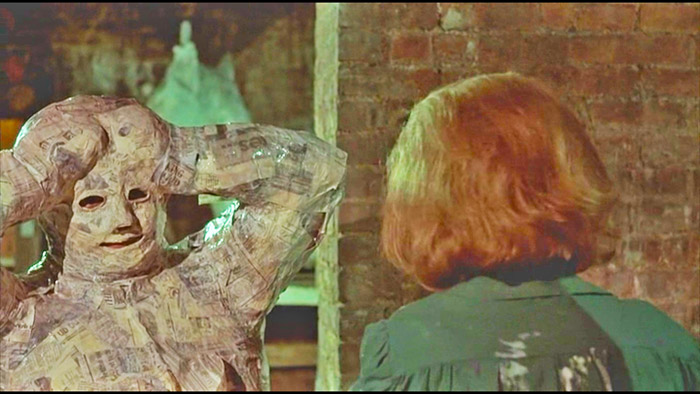As the bars start to close and people settle into bed for the night, a different type of person emerges from the shadows and takes to the streets. The world becomes populated with insomniacs, shift workers, and club-goers; their lifestyle is fundamentally different—not just because of their nocturnal nature, but because the night seems to work on a different moral schedule than the day. The followers of this code are the characters that fill After Hours, Martin Scorsese’s often-overlooked 1985 black comedy. “Different rules apply when it gets this late,” says a shop owner early into the film. He doesn’t know how right he is.
The story follows Paul Hackett (Griffin Dunne), a rather average upper-Manhattan word processor who is lured away from his humdrum lifestyle by the possibility of sex with Marcy (Rosanna Arquette), a woman he met in a coffee shop. Paul treks out to SoHo to meet her at her apartment, and things start to go wrong almost instantly. All of his money flies out of the window of the cab he takes, and after his date quickly goes south, he decides to journey home. This turns out to be much more difficult than expected, and he spends the rest of the night getting into a series of increasingly surreal situations with strangers.
Scorsese once again manages to capture New York City in a way that hadn’t been done before or ever since. Shot on location in SoHo, the streets are scuzzy, slicked with rain, and nearly deserted. Despite being a symbol of the trendy art world, the neighbourhood looks like an unforgiving wasteland of shuttered windows and closed signs. Lending to the mood is Howard Shore’s wiry, dissonant score, syncopated with the sound of a ticking clock, and reflecting the distressed edge that the film radiates.
There are no protagonists or antagonists in this film, just a world governed by blind karma and coincidence. Minor transgressions that Paul commits end up coming back to haunt him later: For instance, taking brief shelter in a woman’s home ends up with him getting mistaken for a burglar, and subsequently hunted by an angry mob. Things that should be easy for anybody—like making a phone call or scrounging up subway fare—are complicated by circumstance, and create an unbearable amount of tension when the sheer weight of each event stacks up over time. The editing lends to this ethos, cutting between shots a little too quickly, which gives even standard conversation scenes an eerie cadence.
At the centre of this mess is Paul, who feels like a living embodiment of the colour beige. He’s a ‘nice guy’ but not necessarily a good guy—his veneer of politeness quickly drops away whenever he has an obstacle to face, making it seem like an act to get what he wants. Still, he remains an interesting contrast to the typical sociopathic Scorsesian anti-hero. It’s easy to sympathize with someone whose attempts at breaking the cycle of flipping through TV channels and eating alone at restaurants fail miserably, and this empathy simultaneously makes his situation more understandable and less forgivable. A lesser film would have ended with Paul coming to enjoy his night of danger, and learning to live a little, but instead, he becomes more irate and beaten down.
The vulnerability that comes with being in such a desperate situation leads Paul to have an unexpected level of intimacy with a number of people he meets through circumstance. Most of these interactions are with the opposite sex; and nearly every time, Paul is made powerless, echoing his inability to connect with Marcy that began his journey in the first place. Part of his lack of agency comes from being out of his element—the film nails the discomforting feeling of being in the home of a total stranger and the sensory overload that comes with it. Through these moments, the feeling persists that things are not going to work out for Paul. Frequent references to burn victims and castration crank up the symbolic tension, but the films ends without ever alleviating that conflict. Thus, the audience is left to contend with the Kafkaesque nature of the world after dark—in the chaos of fire and the scars it leaves.







